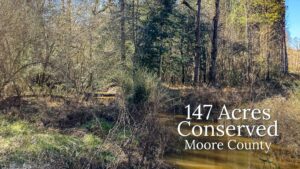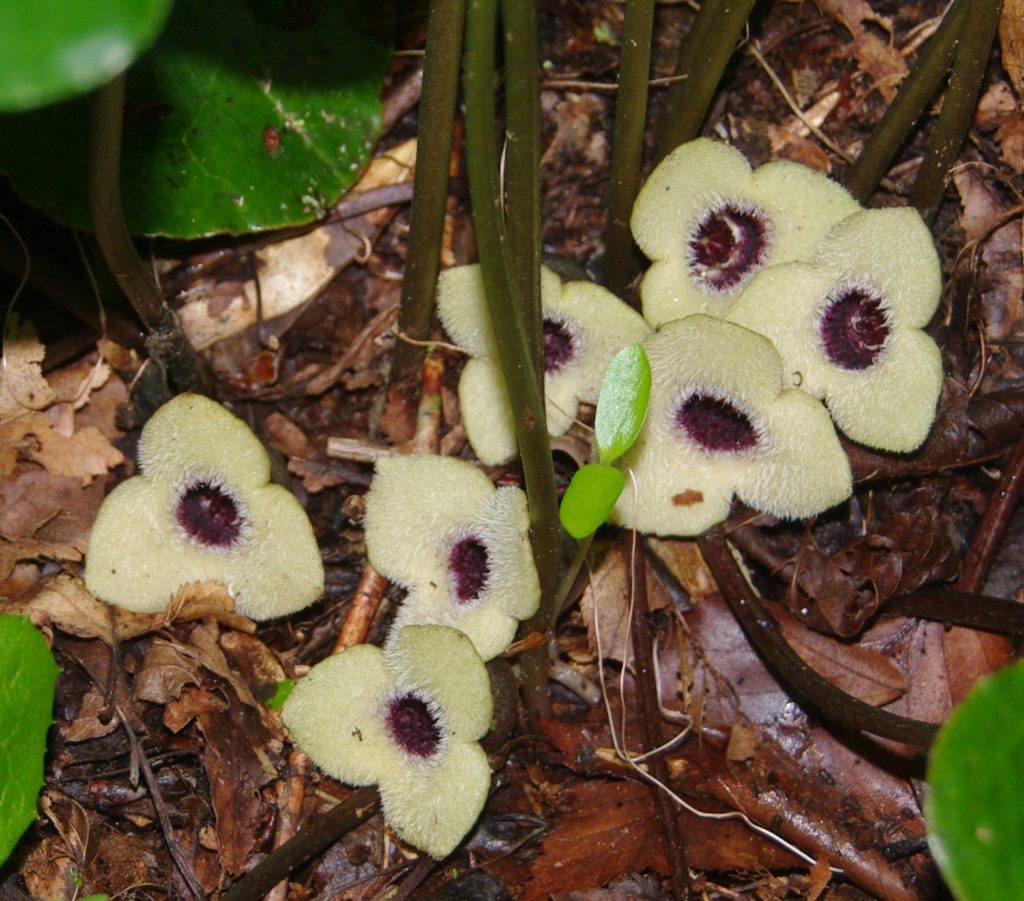
by Crystal Cockman
March 13, 2018

Every year, the North Carolina botanical community gets together for a rare plant forum. This year, it was at the botanical garden in Chapel Hill on February 28th. This year’s program featured a mix of art and science, with the beginning of the event being a showing of Ken Bridle’s watercolor paintings. Ken is the stewardship director for Piedmont Land Conservancy. He paints on masa paper, and he brought with him beautiful portraits of nature, including bluebirds and forest canopies and trumpet creeper.
Mary Frazer with Three Oaks Engineering gave an update on rare roadside plants. The most well-known of these is the Schweinitz’s sunflower. These plants historically grew in open areas, such as Piedmont prairies or savannas, but are now relegated to highway and power line rights-of-ways. The news overall is not good for these rare roadside plants, as herbiciding and mowing challenge their growth, and many populations are on the decline.
Johnny Randall gave an update on Venus flytrap genetic work at the NC botanical garden, and Alan Weakley gave a poetic rendition of taxonomic updates. Wylie Paxton with the National Park Service spoke about finding rare and extirpated plant species.
Jim Matthews and David Campbell talked about the mystery yucca species they are working on – yucca palustris – which I have written about before. It was not a good flowering year for yucca plants, so they weren’t able to gather much more information on this potential new species.
Katherine Culatta with NC State University spoke about Nuphar sagittifolia, Narrowleaf pondlily. She is looking for more information on locations of this uncommon plant so as to further describe its distribution. Bruce Sorrie talked about the rare sedges of the Carolinas. He gave information on which species he thinks should be added to and deleted from the rare plant list.
Jame and John Amoroso provided live music during lunch time, and Sam Pearsall, noted storyteller, provided an after lunch story about how he became a storyteller in the first place. This included an interesting history of his growing up and spending a summer at his Uncle’s farm.
Cecil Frost, a landscape fire ecologist, talked about fire dependent plants. Cecil has used this information to prepare pre-settlement vegetation mapping across the country. This led well into Nell Allen’s talk on the presettlement range of Longleaf Pine and other ecosystems in Randolph County. She brought pine knots to allow the group to examine the difference between shortleaf and longleaf pine. Nell had also researched old deeds, which would call for pine knots as corner stakes in her study to examine where longleaf pine would historically have been in Randolph County.
Mark Rose, with Flannery Fork Botanical Garden, talked about a new species that is his namesake that he first found in 1998 – Asarum rosei. This is a type of wild ginger, and the flower has white petals and a deep burgundy center. It took only a year of work to describe this new species, and it is known from only one location, along a creek in Caldwell County.
Misty Buchanan and Laura Robinson with the NC Natural Heritage Program gave updates on the program, including the fact that the new list of rare plant and animal species will come out later this year. Mike Schafale, also with NC NHP, provided information on the 4th approximation of natural communities of North Carolina.
Elsa Youngsteadt, a research associate for the Department of Entomology and Plant Pathology at NC State University talked about pollination ecology of Michaux’s sumac in the NC Sandhills. This is a federally listed as endangered plant. The plants are dioecious, which means there are separate male and female plants. She found that where there were female only clumps of plants they were producing no seed, as seen in her study. This meant that pollinators were not efficient enough to bring pollen from male plants far away.
Matt Estep with Appalachian State University talked about the proposed Northern Peaks Trail, which would go over the Amphibolite mountains between Boone and West Jefferson, about 40 miles. There are numerous rare plants found on these high elevation communities, and there is concern that foot traffic from a trail would be detrimental to these plant species and natural communities.
This was a day full of great speakers and important information as related to the botanical heritage in our state. It is good to take time each year to gather together and update one another on successes and challenges in our natural world related to the flora found therein. I learned a lot and look forward to seeing what will be on the schedule next year.